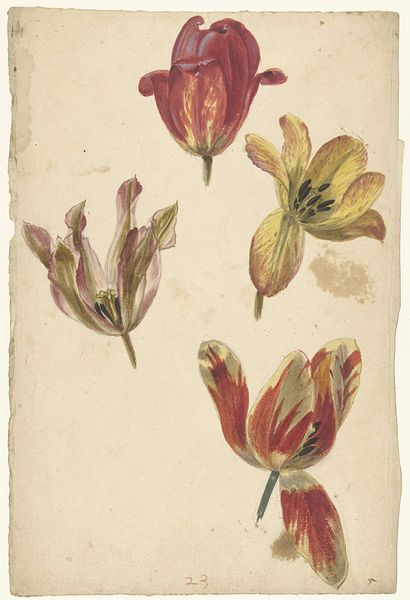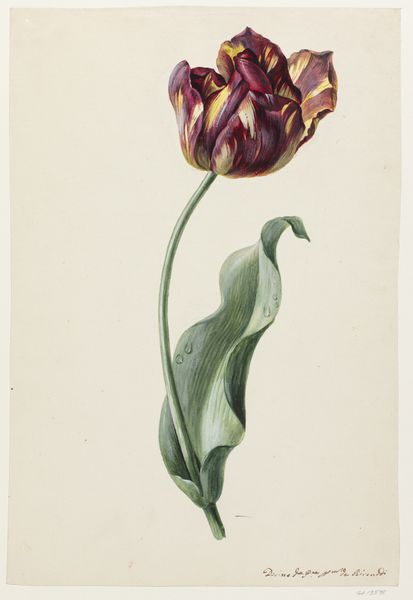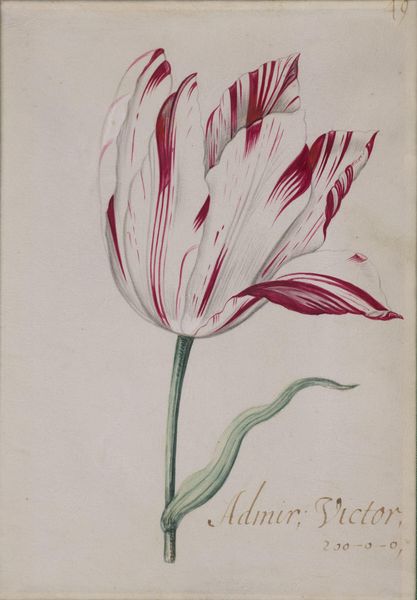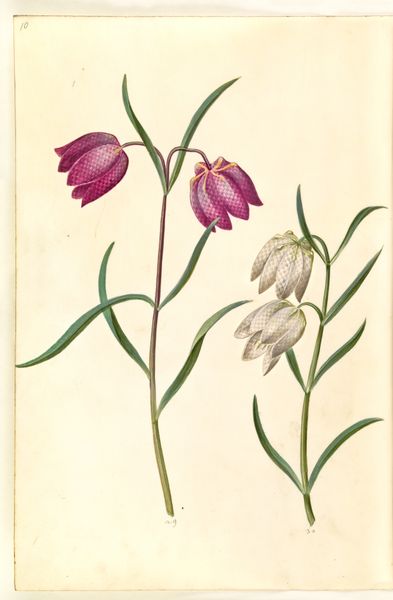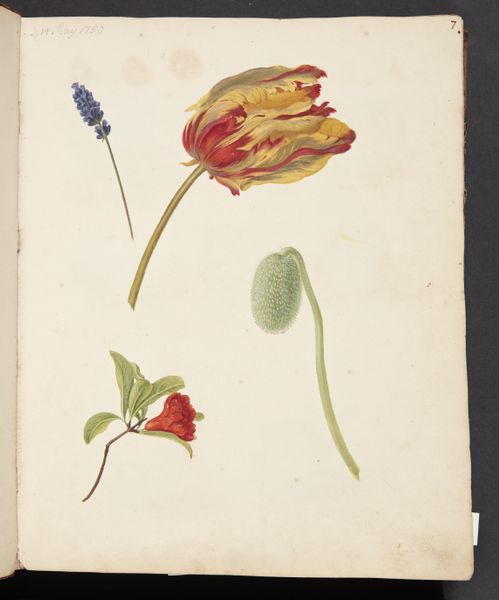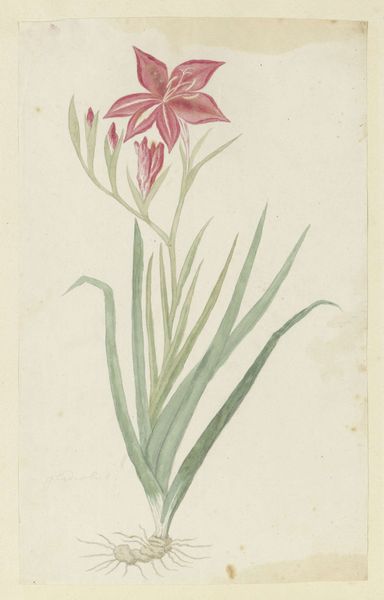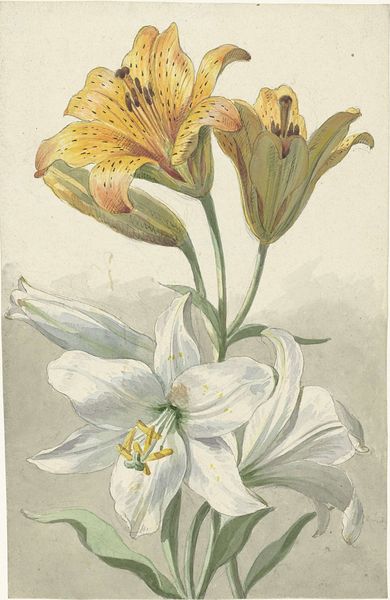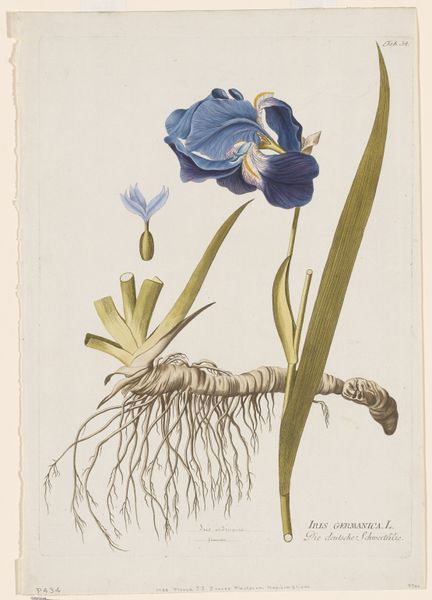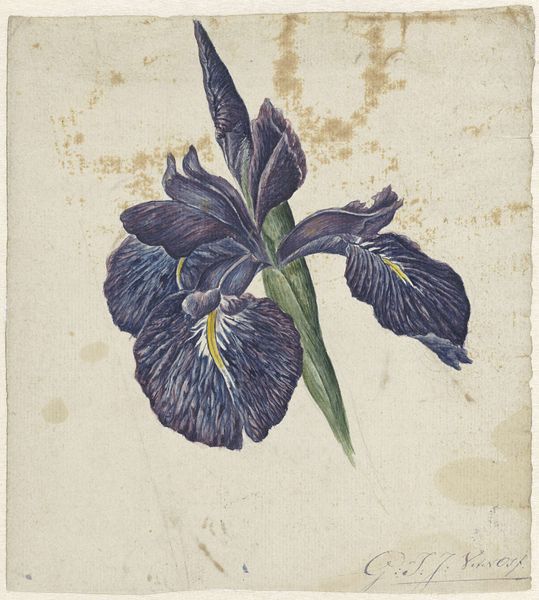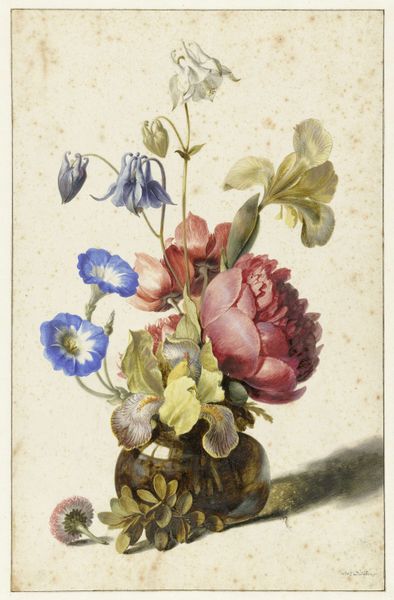
painting, watercolor
#
painting
#
watercolor
#
coloured pencil
#
watercolor
#
realism
Dimensions: height 233 mm, width 187 mm
Copyright: Rijks Museum: Open Domain
Curator: Here we have “Tulp, Akelei en Amaryllis” (Tulip, Columbine and Amaryllis), a watercolor by Georgius Jacobus Johannes van Os, which he produced sometime between 1792 and 1861. It is currently held here at the Rijksmuseum. Editor: It's a rather melancholic composition, wouldn't you agree? The flowers, especially the drooping columbine, evoke a sense of fading beauty. Curator: From a formal perspective, the work showcases van Os' mastery of watercolor technique. Note the meticulous rendering of the petals, capturing the subtle gradations of color and texture. It demonstrates an empirical aesthetic valuing fidelity to visual phenomena. Editor: I wonder what role this image played at a time rife with colonial activity surrounding the Dutch obsession with the tulip. Was this botanic aesthetic an act of observation or ownership? I find it hard not to look at the work with such considerations, positioning flowers in still life as akin to cut jewels extracted and pinned for display. Curator: The composition guides the viewer's eye from the vibrant amaryllis at the top to the more subdued tulip and columbine below, creating a dynamic interplay of form and color. There’s a clear hierarchy established by size and orientation. The larger tulip facing downwards could speak to more than a lack of sun. Editor: Exactly, isn’t there a historical narrative implied here as well? The placement seems to highlight their varying cultural significances. The tulip, a symbol of prosperity during the Dutch Golden Age, now perhaps facing a slow decline with the dimming of that global era and glory. Curator: An interesting perspective. Ultimately, it offers viewers a moment of aesthetic contemplation, inviting us to appreciate the inherent beauty and formal order within the natural world. Editor: And to think critically about how we have historically chosen to frame that beauty and whose interests it served. Thanks for helping open a door to this perspective!
Comments
No comments
Be the first to comment and join the conversation on the ultimate creative platform.
